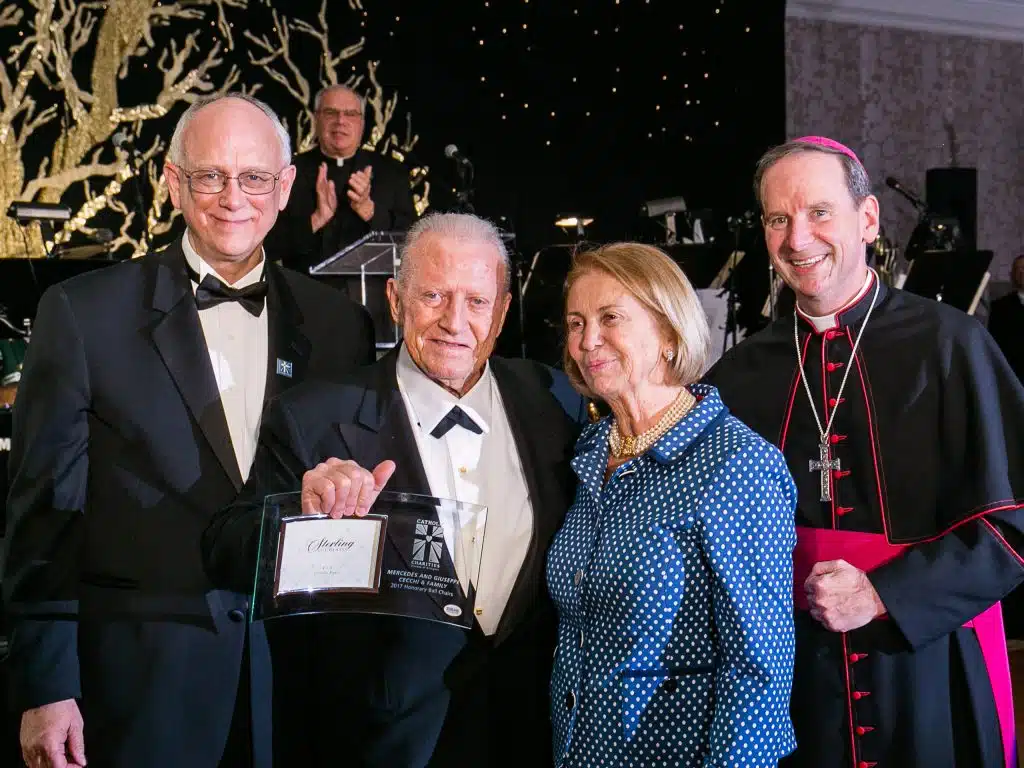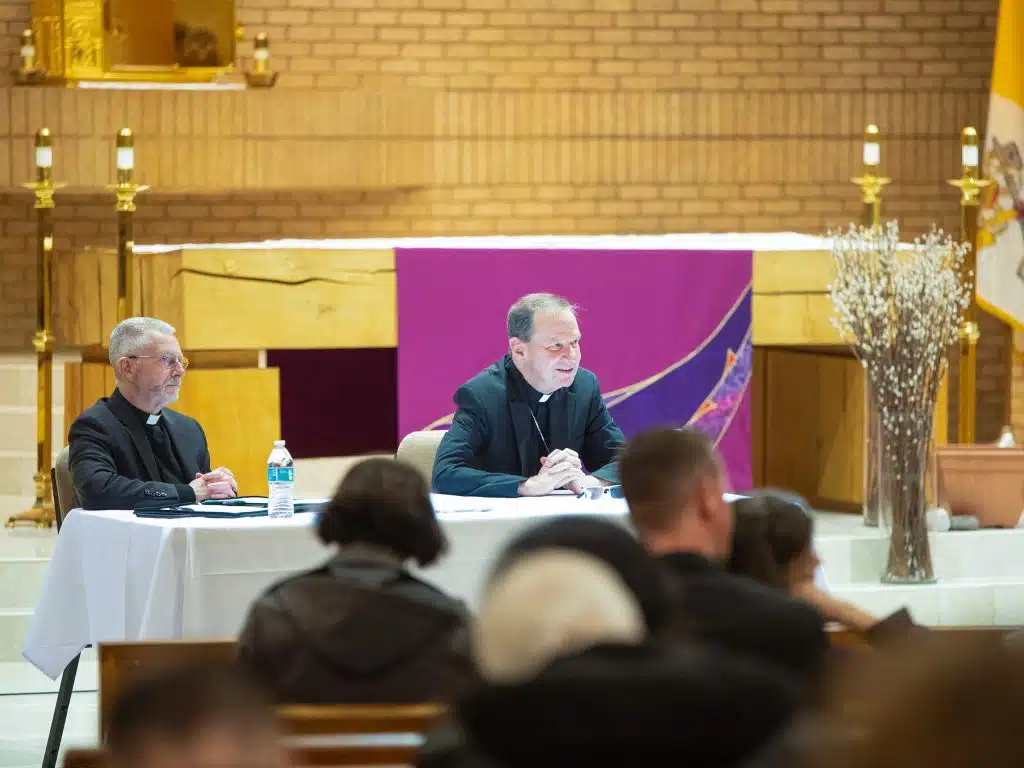“Like a mosaic made of tiles in beautiful colors…” is
the Spanish-language pamphlet tagline that introduces readers
to ¡Venga!, the Arlington Diocese’s new initiative to
increase Hispanic student enrollment in diocesan schools from
McLean to Winchester.
Of the 17,234 students enrolled in diocesan schools, about 10
percent identify themselves as Hispanic. That percentage does
not match the trending growth in Northern Virginia’s Hispanic
communities or Catholic parishes.
From 2000 to 2010, Fairfax County’s Hispanic population
increased from 106,958 to 168,482. During the same period,
the city of Fredericksburg’s Hispanic population grew from
945 to 2,607.
According to CARA, a Catholic research center at Georgetown
University in Washington, 34 percent of U.S. adult Catholics
are Hispanic, compared to 58 percent non-Hispanic whites,
making the Hispanic population the second-biggest Catholic
demographic in the country.
One of the difficulties in recruiting Hispanic students is
the lack of a diocesan-wide English Language Learning program
or translation and interpretation services for newly
immigrated parents.
According to the Virginia Department of Education, per the No
Child Left Behind Act, under Title I of the Elementary and
Secondary Education Act “local educational agencies (LEAs)
are required to provide services for eligible private school
students as well as eligible public school students.”
While Catholic school students are included in this measure,
the lack of such language services in diocesan schools makes
them dependent upon the public schools for relevant
resources, including teachers certified in teaching English
as a Second or Other Language.
Last month, the U.S. Department of Education’s Office of
Non-Public Education co-presented with the Diocese of
Arlington at the National Catholic Educational Association’s
annual conference in Orlando the session sought to to open a
dialogue about how public and Catholic schools can share
resources, including, but not limited to, language resources.
“Let’s Collaborate” presenters included Pamela Allen of the
U.S. Department of Education and Diane Elliott, special
services coordinator in the Arlington Diocese’s Office of
Schools.
“We shared how the Virginia Department of Education works
with private schools for programs under the Elementary and
Secondary Education Act,” said Elliot. “Services for students
whose first language is not English is one of those
programs.”
Another barrier to increasing Hispanic enrollment in Catholic
schools is culture, said Renée Quiros-White, diocesan
director of enrollment management, who explained that
translating promotional materials and enrollment paperwork is
not sufficient for generating Hispanic interest in Catholic
schools. While the Office of Catholic Schools has sought
translation support from the diocesan Hispanic Apostolate,
Quiros-White hopes to adopt some of the cultural measures
taken by the Diocese of Richmond.
Annette Parsons, Richmond’s chief educational administrator,
who started the Hispanic enrollment initiative, Segura, in
2009, said that a talk at the University of Notre Dame in
Indiana helped her realize that creating Spanish flyers and
documents were not enough.
After consulting Richmond Bishop Francis X. DiLorenzo,
Parsons established a madrina, or godmother, system, where
schools could hire a bilingual Hispanic mother to assist
other Hispanic parents five to 10 hours a week. Familiar with
the language and the commonalities among Latin American
cultures, the madrina helps organize lunches and performances
that allow Hispanic families to share their food, songs and
dances with the greater school community.
When Segura started, Richmond had two Hispanic students in
its diocesan schools. Today, that number has grown to 300.
“Food and music are great equalizers,” said Quiros-White, who
added that while Arlington is not collaborating with Richmond
on its Hispanic enrollment initiative, “we are inspired by
the success of Segura.”
Financial limitations also may prevent more Hispanic parents
from enrolling their children in Catholic schools.
Currently, $2.8 million is made available through the
Diocesan Tuition Assistance Program, and $91,220 is made
available through the Diocesan Scholarship Foundation. Also,
$11,824 in special tuition assistance is made available for
single parents with multiple children in Catholic schools.
With ¡Venga!, more funds may be made available for
Hispanic families who complete the necessary paperwork.
¡Venga! is part of the office’s five-year strategic
plan, which aims for, among other things, outreach and
diversity.
In the plan’s summary brochure, Arlington Bishop Paul S.
Loverde states:
“We have received the gift of baptism and share in the
responsibility to fulfill Christ’s final command to ‘go out
and teach’ (cf Mt. 28:19). Our schools are a vital part of
this evangelization among educators, students, parents and
our wider communities.”
In an official statement, Sister Bernadette McManigal,
superintendent for diocesan schools, wrote:
“Opening our school doors to more Hispanic students is an
opportunity for evangelization. It is also an opportunity to
show our appreciation of the many cultures that comprise our
world and to learn from these cultures. Welcoming students
reminds us of the expansiveness and welcoming attitude of our
God. I look forward to this new initiative on the part of our
Catholic schools, new in the sense of a more deliberative
outreach to these neighbors.”
According to the current timeline, the office seeks to
noticeably increase Hispanic student enrollment in time for
the 2016 school year, said Quiros-White.
Find out more
To learn more and for a full listing of diocesan schools, go
to arlingtondiocese.org/catholicschools.
Stoddard can be reached at [email protected].



